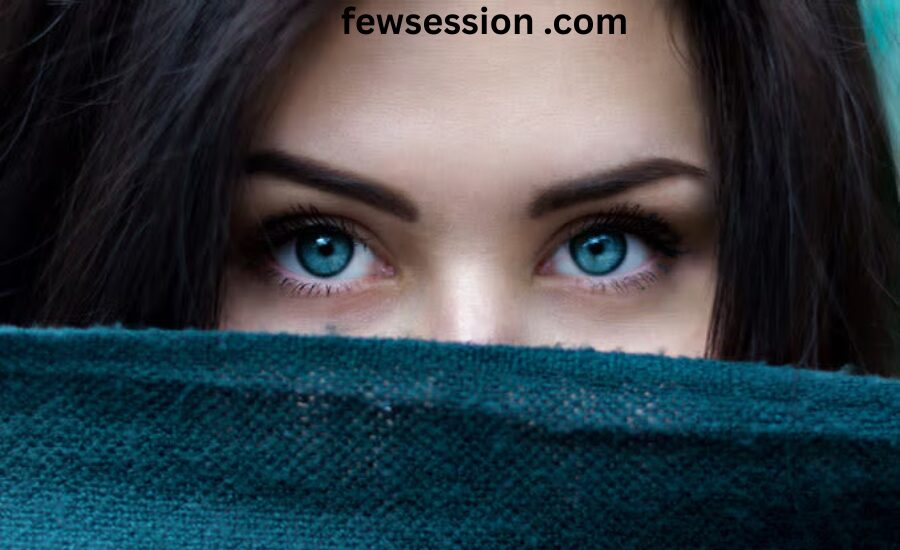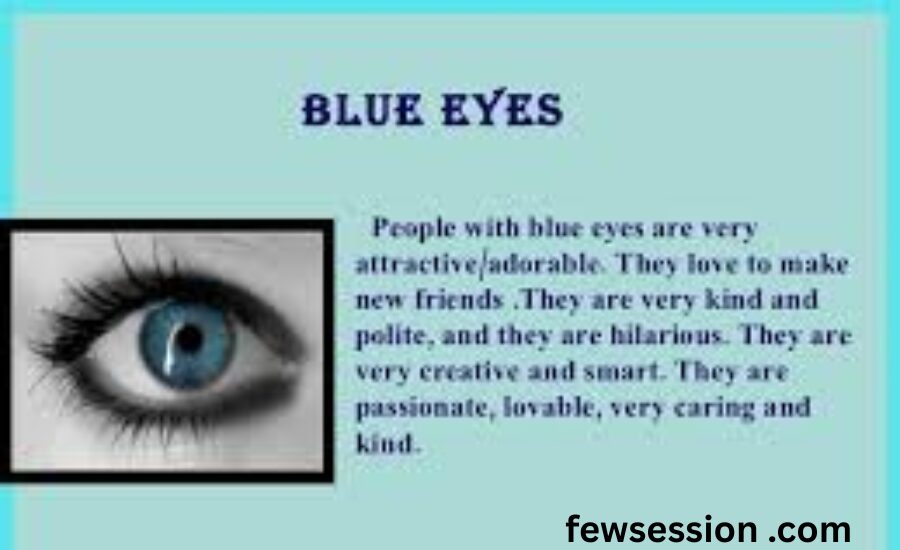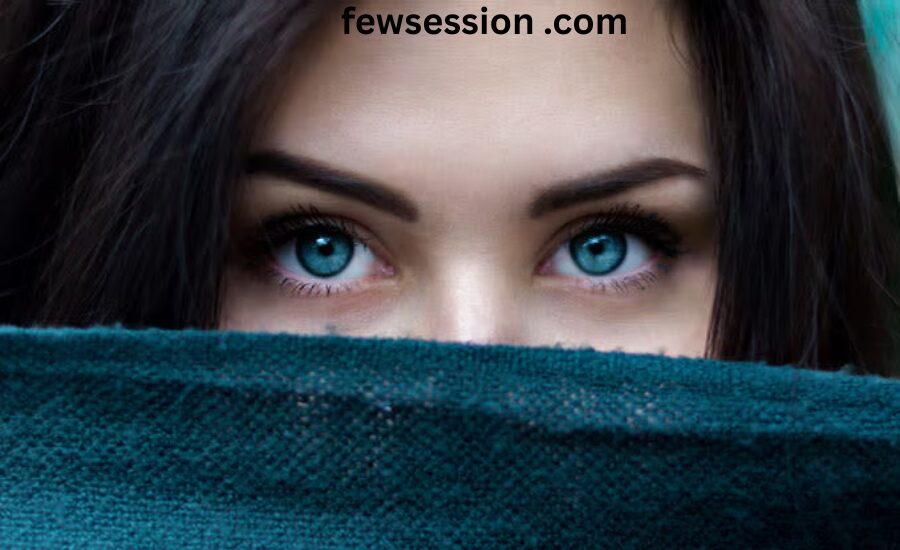Blue eyes have long held a special region in artwork, literature, and regular verbal exchange. Like shimmering sapphires or a calm ocean, they spark interest and emotion, frequently leaving an enduring effect. Their unique allure has stimulated endless metaphors—each one capturing a distinctive issue of their splendor and thriller.
But why are blue eyes so frequently linked with certain emotions or developments? What makes them any such effective symbols in language and storytelling?
In this newsletter, we’ll discover the various metaphors used to describe blue eyes and what they monitor about our perceptions. Just as a person is probably stated to have a “heart of stone” or “nerves of metal,” blue eyes are often defined in approaches that cross a way beyond their coloration. Whether likened to icy skies, deep waters, or treasured gems, those expressions provide extra than description—they evoke mood, emotion, and creativity.
Join us as we find the hidden meanings at the back of those poetic terms and spot how blue eyes have emerged as a canvas for creativity and emotion.
The Importance of Describing Eyes

Imagine having a bypass-to list filled with colourful, expressive phrases to describe eyes—something that might help you capture the ideal photograph of your individual’s gaze. Whether you are writing a heartfelt scene or portray a mysterious individual, locating just the right terms could make all of the distinction.
Crafting strong, meaningful descriptions is one of the joys of innovative writing.
The phrases we select have the strength to tug readers in and convey our characters to life. And in terms of describing eyes—the home windows to the soul—the possibilities are countless.
But let’s be honest: every so often it’s easy to get caught. That’s wherein a thoughtfully curated listing can turn frustration into concept. With the proper words at your fingertips, describing your man or woman’s eyes will become a laugh, creative method—now not a chore.
So if you’re geared up to present your writing with greater colour and readability, you are within the right area. Let’s dive into a group of powerful, eye-themed descriptors with the intention to raise your storytelling.
Why Should You Concentrate on Eyes?
Eyes are effective storytellers. While a person might cover a grin or hide a frown, the eyes regularly betray what terms and gestures attempt to conceal. Tiny shifts—like a short glance, a narrowed gaze, or a twitch of the forehead—can silently speak volumes.
That’s exactly why writers are so attracted to them. Eyes aren’t pretty much colour—they’re approximately movement, expression, and emotion. From the boost of an eyebrow to the blink of hesitation, from an understanding wink to the creases that shape with an actual smile, the eyes deliver characters to lifestyles on the web page.
But with so many authors already painting pics of piercing stares and shimmering irises, is it nonetheless viable to write something fresh and unforgettable? The solution is sure—and it lies in looking beyond the obvious. When you lean into the particular experience of your characters and examine the eyes as dynamic windows into their inner global, you can craft descriptions that experience both authentic and genuine.
Best Terms for Blue Eyes
Blue eyes are frequently visible in newborns, regardless of the truth that their color can shift inside the first couple of weeks after transport. Because of this, blue eyes have long been connected to innocence, youthfulness, and a gentle form of purity. Characters with blue eyes are frequently portrayed as calm, serene, and emotionally soothing—and they usually typically tend to attract the admiration of those around them.
On the flip side, blue eyes can deliver a less flattering tone that means relying on the tone of the story. A character with blue eyes might be considered as overly idealistic, naive, or even a chunk out of contact with fact—occasionally to the point of seeming silly.
If you’re seeking to move beyond absolutely saying “blue eyes,” recall using greater vibrant and specific descriptions like:
Arctic blue – sharp, icy, and extreme
Aquamarine – clear and funky with a hint of green
Baby blue – tender, innocent, and sweet
Cornflower – light, delicate, and kooky
Electric blue – ambitious, vivid, and complete of energy
Ice blue – cold, striking, and mysterious
Indigo – deep, soulful, and moody
Ocean blue – tremendous, emotional, and endlessly deep
Sapphire – wealthy, radiant, and valuable
Sky blue – open, dreamy, and light-hearted
Using those alternatives can assist carry greater personality and nuance on your characters, making their eyes as expressive as their emotions.
Metaphors for Blue Eyes
1. Blue Eyes Like the Sky
Meaning: A manner to describe blue eyes which can be brilliant, open, and paying homage to a clean sky.
In a Sentence: Her eyes held the same calm and brightness as a clean summer season sky.
Other Ways to Say It:
Eyes the color of the heavens
Sky-toned eyes
Eyes like open skies
2. Blue Eyes Like the Ocean
Meaning: An assessment that emphasizes the intensity, mystery, or movement observed in ocean-coloured eyes.
In a Sentence: His gaze held the equal limitless pull as the sea, deep and continuously transferring.
Other Ways to Say It:
Eyes as deep as the sea
Ocean-colored eyes
Waves reflected in his eyes
3. Blue Eyes Like Sapphires
Meaning: Used to describe blue eyes that sparkle with depth or value, just like a gem.
In a Sentence: Her sapphire-like eyes gleamed underneath the candlelight, wealthy and complete of fire.
Other Ways to Say It:
Jewel-toned blue eyes
Eyes that gleamed like sapphires
Gem-vibrant eyes
Best Terms for Brown Eyes
Brown is the most sizable eye colour around the world, and it often contains sturdy institutions in storytelling. Characters with brown eyes are frequently portrayed as grounded and dependable—individuals who exude energy, confidence, and heat. Others generally tend to view them as honest, stable, and steady, giving off an air of mystery of quiet assurance.
However, in exceptional contexts, brown eyes can also advocate the alternative. A person is probably perceived as overly easy, stupid, or maybe tough round the edges relying on their persona or function inside the story.
Instead of simply announcing “brown eyes,” strive the use of extra shiny and precise sunglasses like:
Amber
Champagne
Chestnut
Chocolate
Dirt
Golden
Honey
Mud
Ocher
Tawny
Topaz
Umber
These variations can bring more texture and richness to your personal descriptions.
Best Terms for Gray Eyes
Gray eyes regularly bring an experience of mystery and intensity, and in literature, they’re generally related to characters who’re mature, sensible, or emotionally observant. While gray eyes are now and again reserved for older people, they can also reflect thoughtfulness, calm, and quiet intelligence in more youthful characters. These characters are often introspective, mild, and notably analytical.
On the flip aspect, grey eyes might also now and again be used to suggest a loss of spark—someone perceived as simple, emotionally distant, or unremarkable in positive social conditions.
To add richness for your descriptions, strive the usage of greater evocative sun shades like:
Anthracite
Charcoal
Cloudy gray
Graphite
Silver
Slate
Smokey
Each of these brings a slightly different mood or tone, helping to capture the subtle power of gray-eyed characters in your writing.
Best Terms for Green Eyes

Green eyes are frequently wrapped in an experience of mystery and magic, regularly determined in characters who’re deeply connected to nature. These eyes generally tend to suggest interest, passion, and an upbeat, vibrant persona. Writers regularly use inexperienced-eyed characters to embody a loose-spirited or whimsical allure.
On the flip side, inexperienced eyes can occasionally trace envy or danger—bringing to thoughts the word “inexperienced with jealousy” or evoking the picture of poison in vintage tales and legends.
To deliver more depth and variety to your descriptions, recall using rich, bright tones inclusive of:
Chartreuse
Emerald
Forest green
Jade
Olive green
Sea green
Each of these shades helps to express a unique quality, making your character’s gaze feel more alive and memorable.
Best Terms for Other Eye Colors
Hazel Eyes
Hazel eyes—the ones enthralling blends of inexperienced and brown—frequently reflect a vibrant and spontaneous persona. Characters with this eye color are usually portrayed as adventurous, aggressive, and full of unpredictable power. The twin-tone nature of hazel eyes also can trace emotional complexity or moodiness.
If the green hue dominates, it might endorse a mischievous or playful streak. When the brown tones are more distinguished, the person can also come upon as heat, grounded, and approachable.
Red Eyes
Red eyes are extraordinarily uncommon in people and typically seem only in those with albinism. As a result, they may be most usually used in fantasy or supernatural storytelling. In fiction, pink eyes can symbolize uncooked electricity, fierce ambition, and ambitious braveness. However, additionally they regularly deliver darker institutions—rage, revenge, or malevolent power.
Depending at the temper or symbolism you want to bring, you would possibly describe pink eyes with phrases like:
Blood pink
Fiery
Deep red
Wine pink
Hot red
Pale crimson
Violet Eyes
Violet eyes are strikingly uncommon, making them best for characters with an air of mystery or magic. Often reserved for royalty, prophets, or supernatural beings, this specific coloration suggests know-how, beauty, and an almost otherworldly presence. Whether your man or woman is a noble ruler or a magical oracle, violet eyes can set them apart.
You ought to describe violet eyes using:
Amethyst
Hyacinth
Ultramarine
Lavender
Royal red
White Eyes
White or clouded eyes are commonly used to indicate blindness, both partial or complete. This doesn’t restrict your individual’s abilities, even though—in truth, white eyes often recommend a deeper notion, whether bodily, religious, or metaphorical. In fable and fable, they will also signify visions, prophecy, or tr
Final Thought
Eyes do more than simply reveal color—they reflect personality, hint at hidden emotions, and help shape the identity of your characters. Whether calm and oceanic or sharp and gem-like, blue eyes—and eyes of every other shade—offer an expressive canvas for storytelling. The way you choose to describe them can transform a simple glance into a powerful moment of connection between character and reader.
By exploring rich metaphors and unique descriptors, you’re not just adding detail—you’re deepening your narrative and breathing life into your characters. So the next time you write, look a little closer. Let the eyes speak volumes, and let your words turn a stare into something unforgettable.
Read More About blue eyes At https://fewsession.com/
